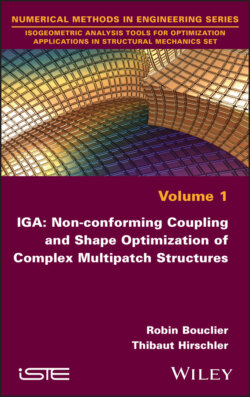Читать книгу IGA - Robin Bouclier - Страница 31
1.5. Computation of non-conforming interfaces: a brief overview of usual weak coupling methods
ОглавлениеAs observed in the previous section, the development of advanced coupling methods that enable us to connect (possibly non-conforming) patches is crucial in IGA to simulate realistic structures and to answer our long-term objective of optimally designing such complex structures. This is also necessary in the search of a true bridge between CAD and analysis. To meet this goal, important studies have been performed in the last five years by the IGA community to revisit and extend the different weak domain coupling approaches that were initially developed for standard FEM. Basically, the resulting strategies can be divided into three classes: penalty coupling (Apostolatos et al. 2014a, 2014b; Herrema et al. 2019; Coradello et al. 2020; Leonetti et al. 2020), Mortar coupling (Brivadis et al. 2015; Dornisch et al. 2015, 2017; Bouclier et al. 2016, 2017; Coox et al. 2017a; Zou et al. 2018; Dittmann et al. 2019; Wunderlich et al. 2019) and Nitsche coupling (Nguyen et al. 2014; Ruess et al. 2014; Jiang et al. 2015; Schillinger et al. 2016a; Bouclier and Passieux 2018; Hu et al. 2018; Buffa et al. 2019; Elfverson et al. 2019). In the following, we attempt to present the principle for each approach. In order to do so, we place ourselves in the context of linear elasticity and stay general by only giving the minimal state of art, the basic continuum formulations and the main properties of each coupling technique. We indicate that the discussion reflects the author’s interpretation, which is not unique: it is performed in accordance with the works achieved in the next chapters, in particular the development of noninvasive and high-performance computing tools.
